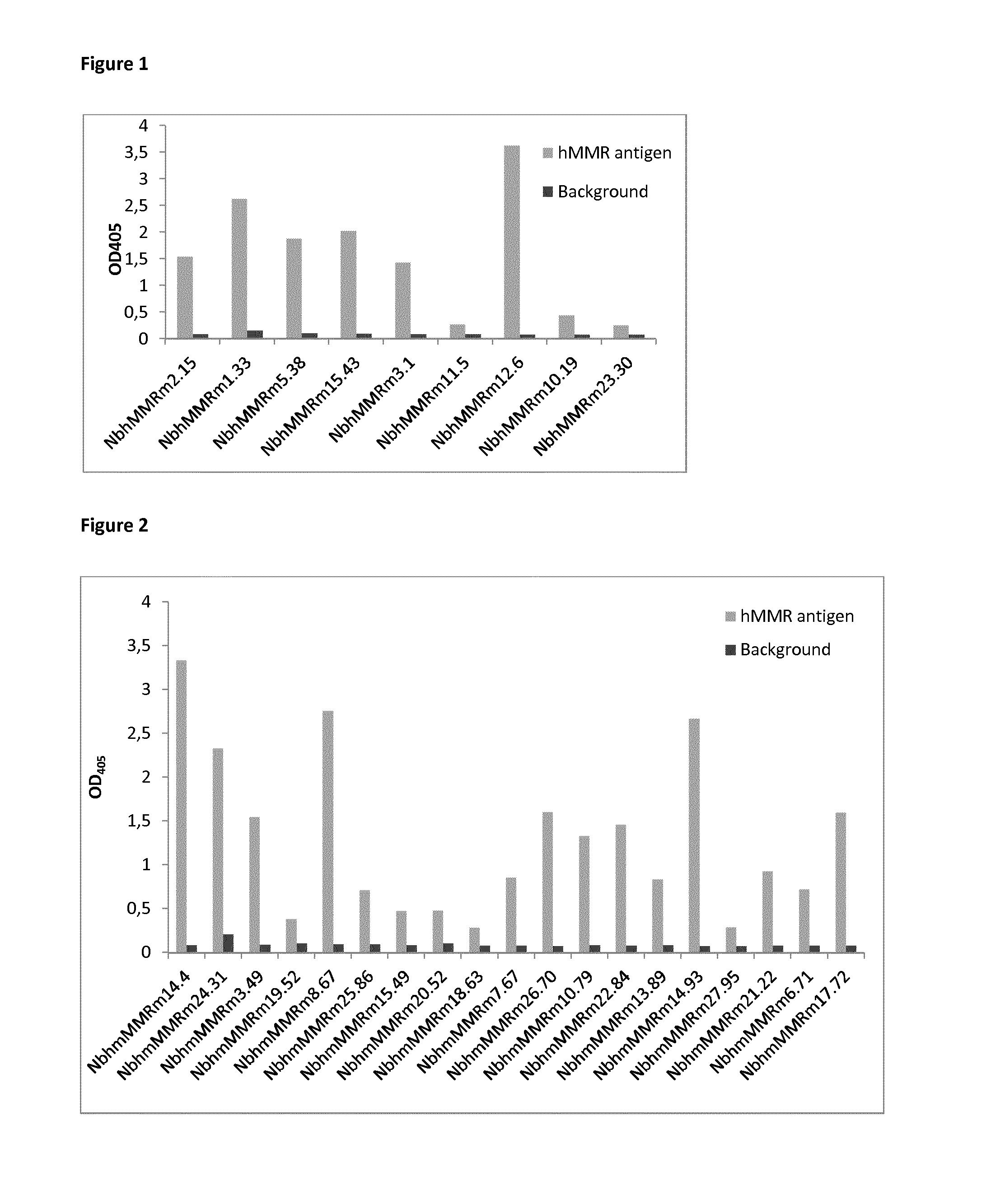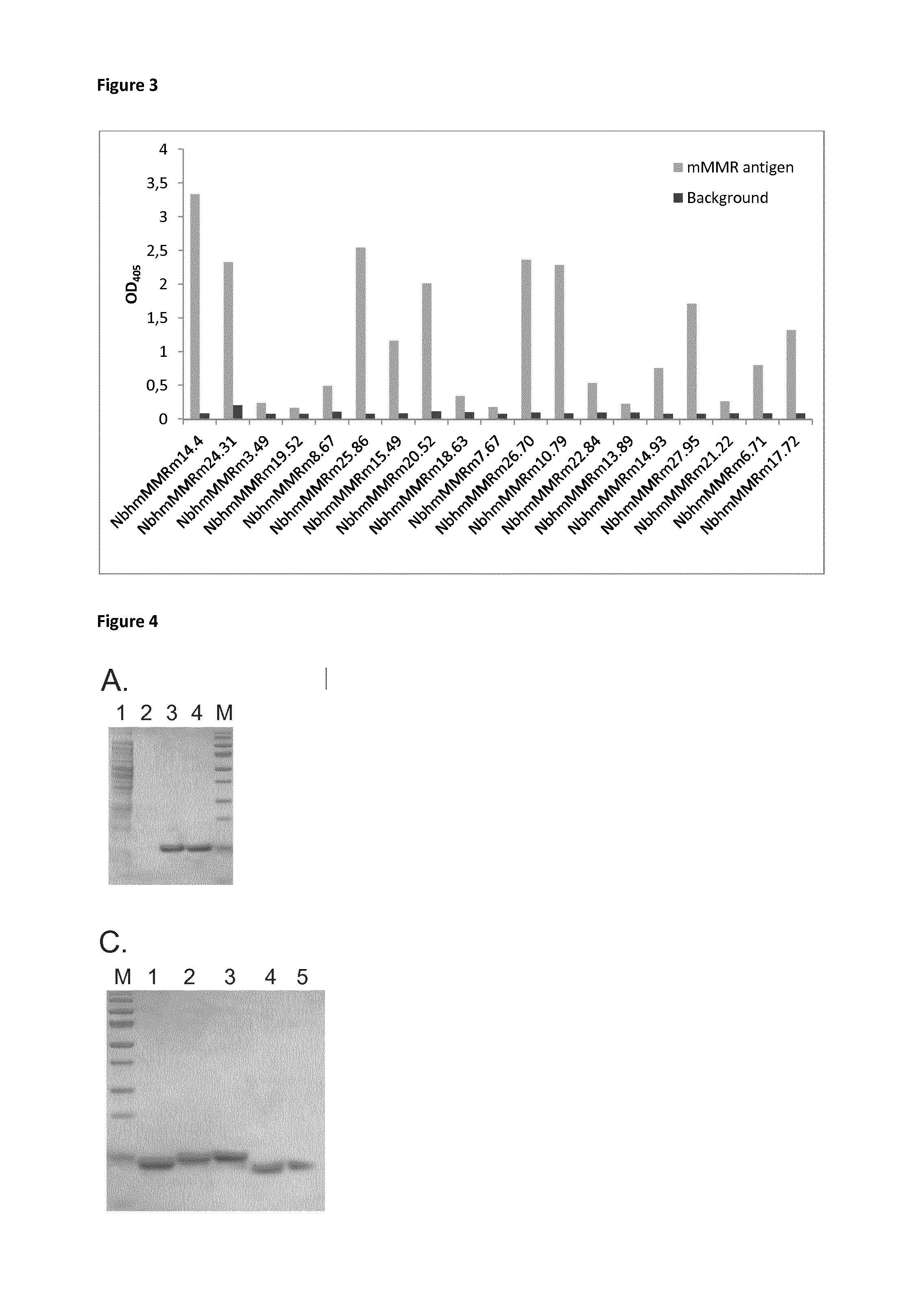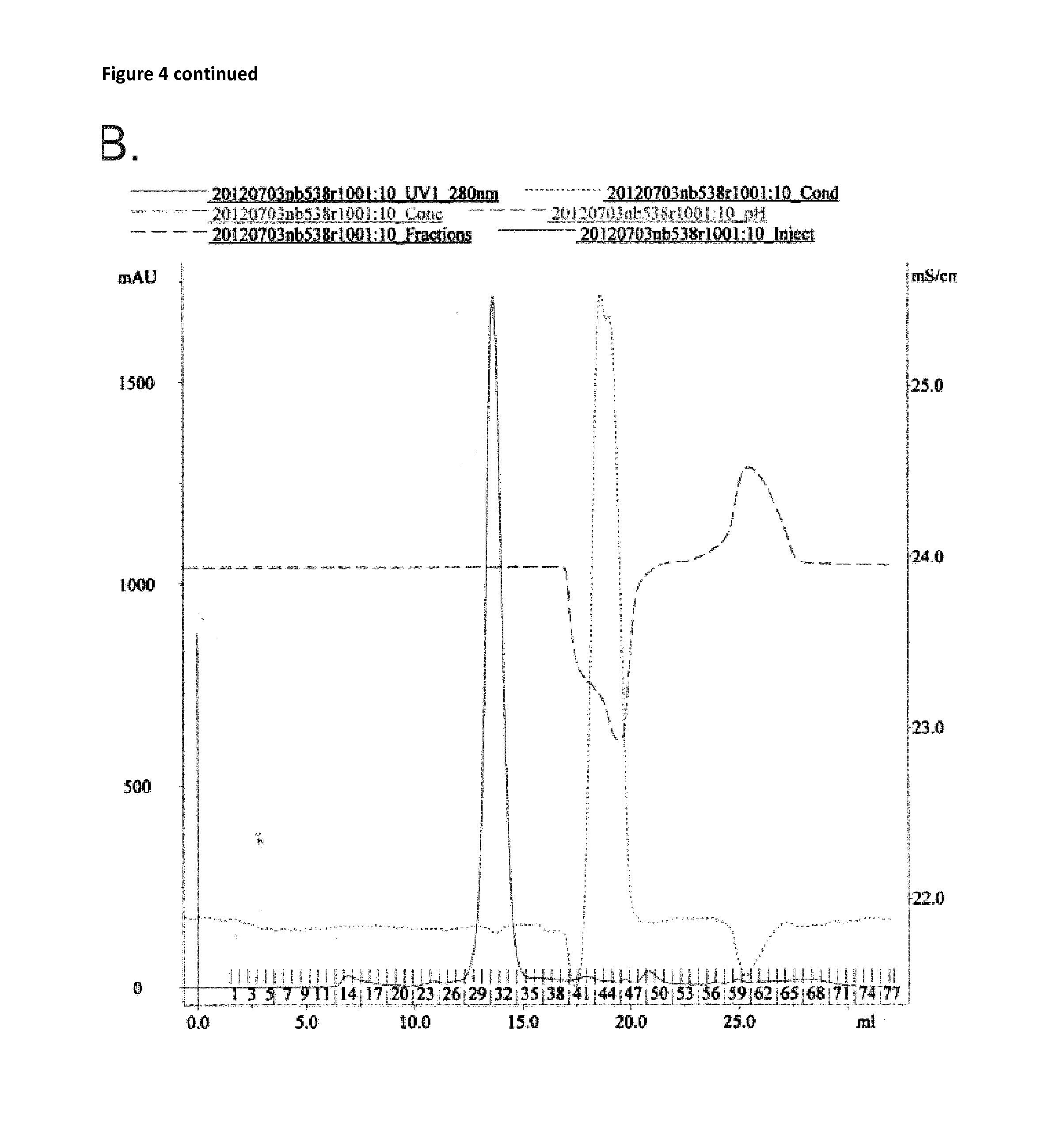Anti-macrophage mannose receptor single variable domains for targeting and in vivo imaging of tumor-associated macrophages
- Summary
- Abstract
- Description
- Claims
- Application Information
AI Technical Summary
Benefits of technology
Problems solved by technology
Method used
Image
Examples
example 1
Relevance of MMR as a Marker for Tumor-Promoting TAMs in Human Tumors
[0167]In order to test the relevancy of MMR as a marker for tumor-promoting TAMs in human tumors, MMR and CD68 (as human macrophage marker) expression in paraffin-embedded sections of human breast cancer samples (VUB-UZ Brussel) was assessed. Using immunohistochemistry on consecutive slides of the same specimen and one double staining on a single slide, the presence of CD68-positive macrophages in both tumor and fibrotic foci within the tumor region was demonstrated. Immunostaining for MMR clearly shows that the macrophages found in fibrotic foci do co-express MMR (data not shown). Since fibrotic foci within the tumor region is known to be a marker of hypoxia and worse prognosis (Colpaert et al. 2003, Breast Cancer Res. Treat. 81:137-47), the presence of MMR+ macrophages could function as an indicator of severe hypoxia in human tumors as well, similar to what was shown before for mouse tumors (US2011 / 0262348). In c...
example 2
Selection of Anti-Human MMR Nbs
[0168]Anti-human MMR sdAbs were generated (see Material and Method section). After four panning rounds of an anti-human / anti mouse MMR phage bank on human MMR, up to 100-fold enrichments for hMMR reactive phages were observed per panning round. Therefore, 188 colonies from all rounds were selected for PE-expression. These PE-extracts were used in PE-ELISAs to determine which clones react effectively to hMMR. In total 100 clones were selected based on these results (FIG. 1). Additionally, the DNA and protein sequence of the selected clones was determined (Table 1) and double clones or premature stopping clones were discarded.
example 3
Selection of Anti-Human / Mouse MMR Cross-Reactive Nbs
[0169]Next, anti-human / mouse MMR cross-reactive sdAbs were generated (see also Material and Method section). The anti-human / anti mouse MMR phage bank was alternatingly screened on human and mouse MMR for a total of four rounds, resulting in up to 100-fold enrichments for hMMR / mMMR reactive phages from the second panning round. Therefore, 188 colonies from the second and third rounds were selected for PE-expression. These PE-extracts were used in PE-ELISAs to determine which clones react effectively to MMR, clones were selected after the ELISA on hMMR (FIG. 2). These clones were then screened for binding on mouse MMR (FIG. 3). Only clones (42) that reacted to both antigens were withheld as true cross-reactive Nbs. These clones were sequenced (Table 2) and divided into families based on their CDR3 regions.
PUM
| Property | Measurement | Unit |
|---|---|---|
| Fraction | aaaaa | aaaaa |
Abstract
Description
Claims
Application Information
 Login to View More
Login to View More - R&D
- Intellectual Property
- Life Sciences
- Materials
- Tech Scout
- Unparalleled Data Quality
- Higher Quality Content
- 60% Fewer Hallucinations
Browse by: Latest US Patents, China's latest patents, Technical Efficacy Thesaurus, Application Domain, Technology Topic, Popular Technical Reports.
© 2025 PatSnap. All rights reserved.Legal|Privacy policy|Modern Slavery Act Transparency Statement|Sitemap|About US| Contact US: help@patsnap.com



